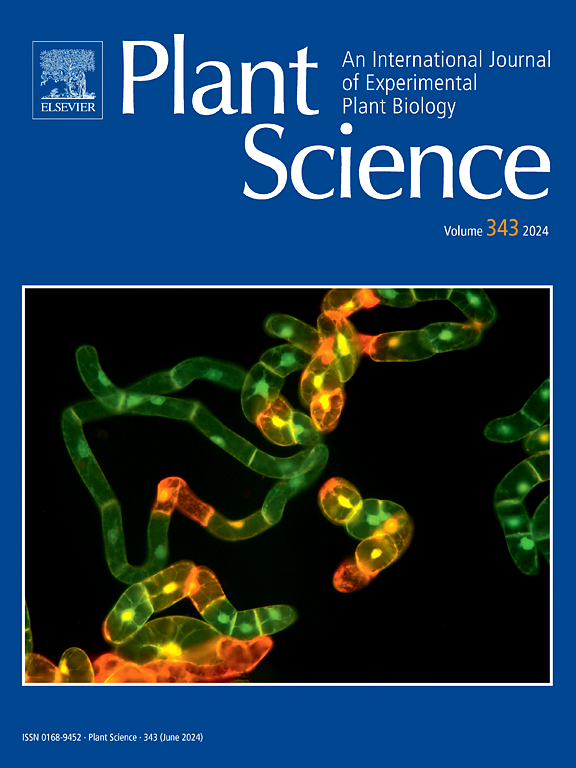综述:海藻糖及其在植物适应盐胁迫中的作用
IF 4.2
2区 生物学
Q2 BIOCHEMISTRY & MOLECULAR BIOLOGY
引用次数: 0
摘要
盐胁迫是一种重要的影响植物生长和产量的非生物胁迫,它引起氧化损伤、渗透胁迫和离子平衡紊乱。为了克服这些问题,天然存在的双糖海藻糖由于其在提高植物耐盐性方面的多种功能而受到越来越多的关注。本文综述了海藻糖如何增强耐盐性的最新信息,重点介绍了海藻糖的生化、生理和信号功能。海藻糖清除活性氧,激活重要的抗氧化酶,以稳定细胞结构,维持渗透平衡,减少氧化损伤。此外,在盐水条件下,它通过维持叶绿体完整性和稳定光系统和代谢酶来提高光合效率。随着气候变化加剧了盐胁迫的严重程度,将海藻糖纳入作物管理实践具有推动可持续农业和确保全球粮食安全的巨大潜力。尽管取得了重大进展,海藻糖作用的具体机制,特别是其在信号通路中的作用及其与其他代谢物的相互作用,仍然是活跃的研究领域。本文综述了海藻糖在可持续农业中的潜在应用,为进一步研究海藻糖调控植物生长发育和抗逆性的机制奠定了基础。本文章由计算机程序翻译,如有差异,请以英文原文为准。
Review: Trehalose and its role in plant adaptation to salinity stress
Salinity stress is an important abiotic stress that negatively affects plant growth and yield as it causes oxidative damage, osmotic stress, and ionic balance disturbances. To overcome these problems, the naturally occurring disaccharide trehalose has received increasing attention due to its multiple roles in functions essential in enhancing plant tolerance to salt. This review examines the current information on how trehalose enhances salinity tolerance, highlighting its biochemical, physiological, and signaling functions. Trehalose scavenges reactive oxygen species and activates important antioxidant enzymes to stabilize cellular structures, maintain osmotic equilibrium, and reduce oxidative damage. Furthermore, it boosts photosynthetic efficiency by maintaining chloroplast integrity and stabilizing photosystems and metabolic enzymes under saline conditions. As climate change increases the severity of salt stress, incorporating trehalose into crop management practices has promising potential to advance sustainable agriculture and ensure global food security. Despite significant progress, the specific mechanisms of trehalose's action, especially its role in signaling pathways and its interactions with other metabolites, remain active research areas. This review explores the potential applications of trehalose in sustainable agriculture while providing a foundation for further research into its mechanisms in regulating plant growth, development, and stress resistance.
求助全文
通过发布文献求助,成功后即可免费获取论文全文。
去求助
来源期刊

Plant Science
生物-生化与分子生物学
CiteScore
9.10
自引率
1.90%
发文量
322
审稿时长
33 days
期刊介绍:
Plant Science will publish in the minimum of time, research manuscripts as well as commissioned reviews and commentaries recommended by its referees in all areas of experimental plant biology with emphasis in the broad areas of genomics, proteomics, biochemistry (including enzymology), physiology, cell biology, development, genetics, functional plant breeding, systems biology and the interaction of plants with the environment.
Manuscripts for full consideration should be written concisely and essentially as a final report. The main criterion for publication is that the manuscript must contain original and significant insights that lead to a better understanding of fundamental plant biology. Papers centering on plant cell culture should be of interest to a wide audience and methods employed result in a substantial improvement over existing established techniques and approaches. Methods papers are welcome only when the technique(s) described is novel or provides a major advancement of established protocols.
 求助内容:
求助内容: 应助结果提醒方式:
应助结果提醒方式:


